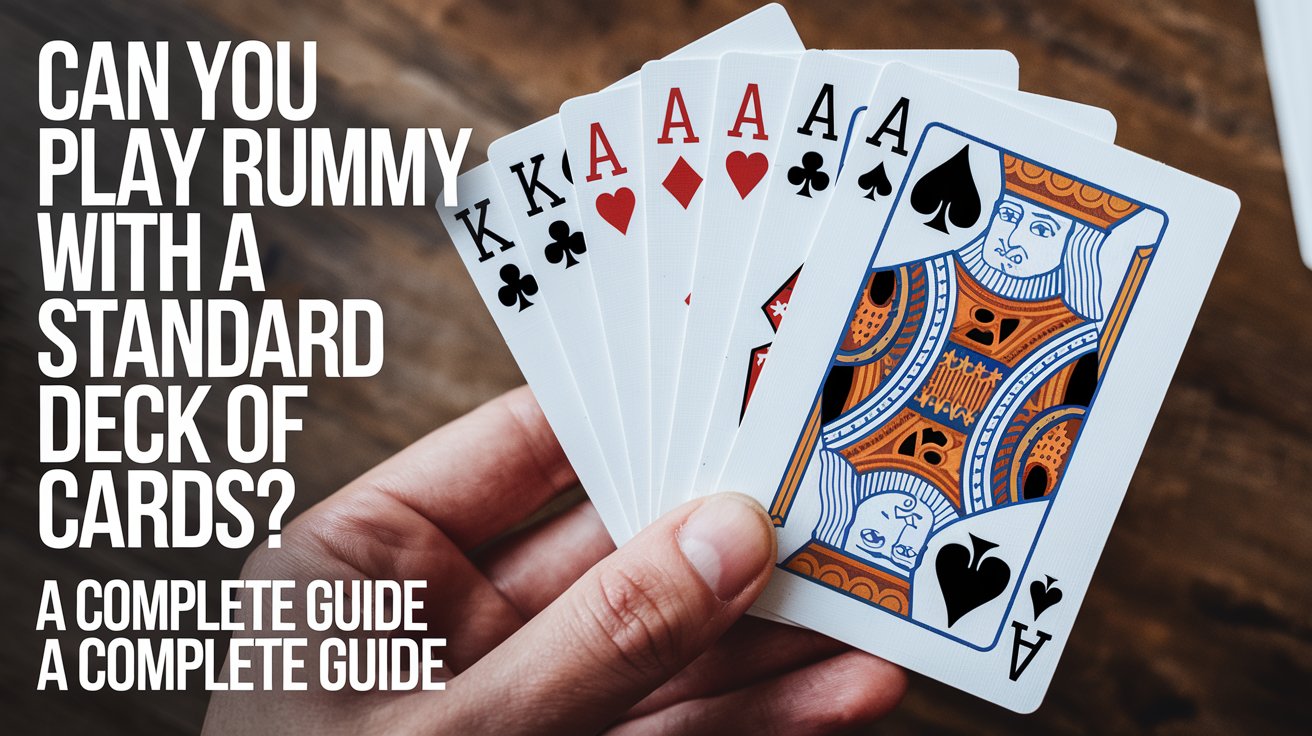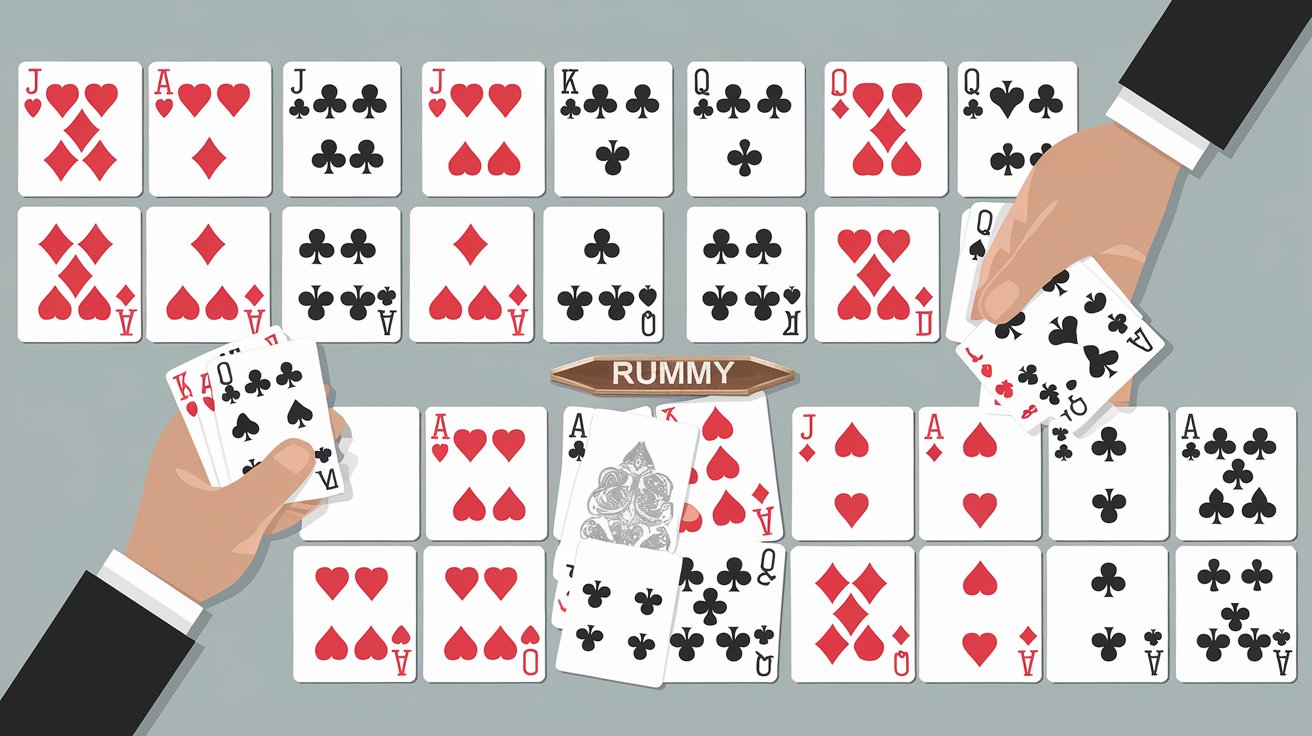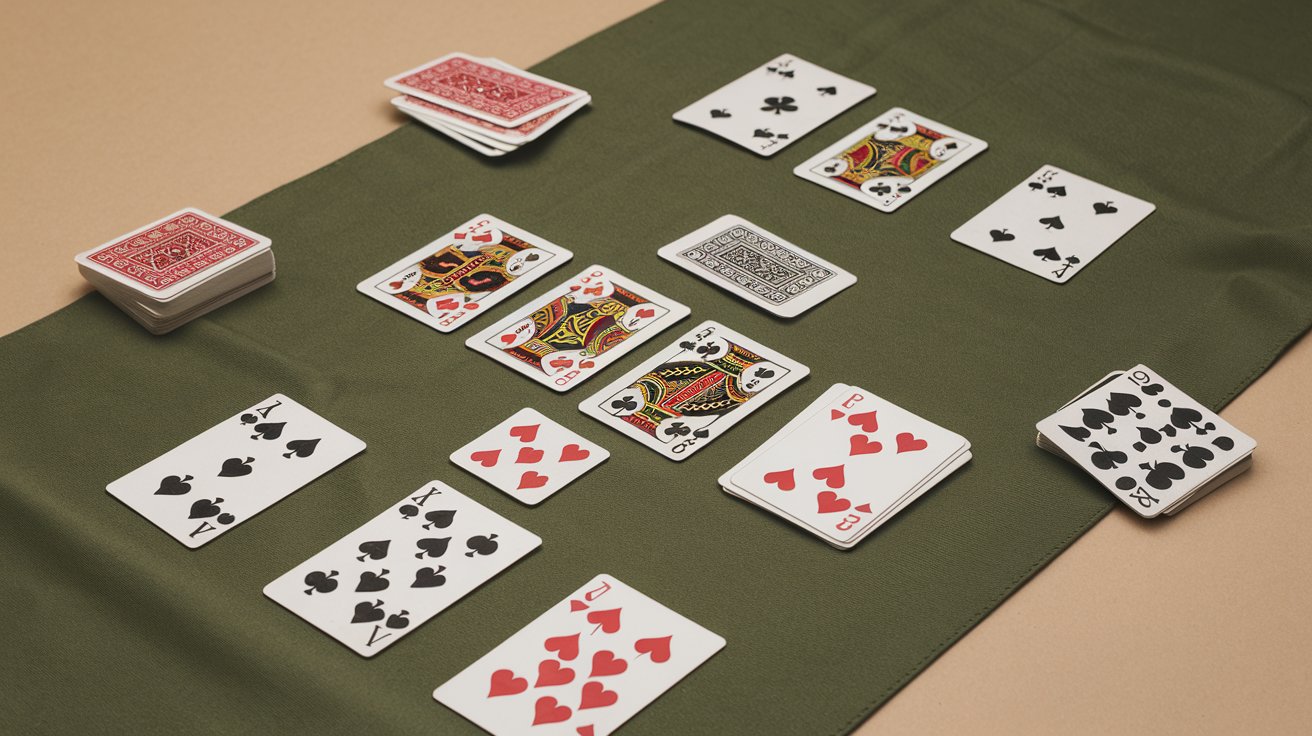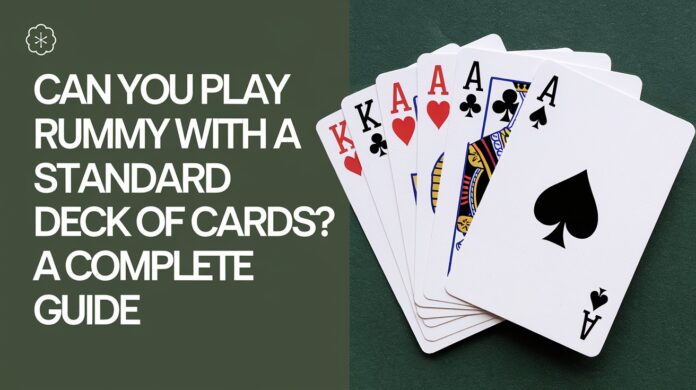Rummy is a popular card game enjoyed by millions of players around the world. Its appeal lies in its simplicity, strategic depth, and the social interaction it fosters among players. One question that often arises, especially for beginners, is whether Rummy can be played with a standard deck of cards. The answer is a resounding yes!
In this blog, we’ll explore how you can play Rummy using a standard deck of cards, why it’s the preferred choice for many, the variations of Rummy that use a standard deck, and some helpful tips and strategies to improve your game. Whether you’re playing at home with friends, family, or in a competitive setting, understanding how to play Rummy with a standard deck will help you enjoy the game to the fullest.
What is Rummy?
Before diving into the specifics of using a standard deck of cards, let’s briefly define Rummy. Rummy is a matching-card game where players attempt to form valid sets and runs using the cards dealt to them. A set consists of three or four cards of the same rank but different suits (for example, 7 of Hearts, 7 of Clubs, and 7 of Spades), while a run is a sequence of three or more consecutive cards of the same suit (such as 4, 5, 6 of Diamonds).
The main goal in Rummy is to arrange all your cards into valid combinations and “go out”, meaning you’ve successfully completed your hand. The game involves a mix of skill, strategy, and luck—players must decide when to draw, when to discard, and when to meld their sets or runs. At the end of the round, the player who has successfully completed their combinations first wins, and the other players count the points remaining in their hands.
Can You Play Rummy with a Standard Deck of Cards?

Absolutely! You can play Rummy with a standard deck of 52 cards, and it’s actually the most common setup for many variations of Rummy. The standard deck is made up of four suits (hearts, diamonds, clubs, and spades), each containing 13 ranks (Ace, 2, 3, 4, 5, 6, 7, 8, 9, 10, Jack, Queen, and King).
While two decks or decks with jokers are commonly used in some Rummy variants, such as Indian Rummy, the basic, classic form of Rummy can easily be played with just one standard deck.
How to Play Rummy with a Standard Deck of Cards
Playing Rummy with a standard deck follows a straightforward set of rules. Here’s how you can set up and play the game:
1. Deck Setup
A standard deck of 52 cards is sufficient for a game of Rummy. You’ll need the following:
- Deck of Cards: The standard deck has 52 cards, consisting of four suits: hearts, diamonds, clubs, and spades. Each suit has thirteen ranks: Ace, 2, 3, 4, 5, 6, 7, 8, 9, 10, Jack, Queen, and King.
- Players: Typically, 2-6 players can play with a standard deck. The more players, the more challenging and fun the game becomes.
- Jokers: In some Rummy variants, jokers are used as wild cards to help complete sets and runs. However, for a standard Rummy game with just a deck of 52 cards, you don’t need jokers (unless you’re playing a variation that includes them).
2. Card Dealing
- The dealer shuffles the deck and deals the cards to the players:
- 2 players: Deal 10 cards to each player.
- 3 or more players: Deal 7 cards to each player.
- After dealing the cards, the remaining cards form the stockpile (face-down pile) placed in the center of the table. The top card from the stockpile is turned face-up and placed beside it, starting the discard pile.
3. Basic Gameplay
Rummy is played in turns, and each turn follows a sequence of actions:
- Draw: At the beginning of your turn, you must draw one card. You can draw either from the stockpile or the discard pile (the face-up card).
- Meld (Optional): After drawing, you can meld any valid sets or runs from your hand. This step is optional, and you are not required to lay down cards unless you wish to do so. Melding helps you reduce your points and makes it easier to go out later.
- Discard: After melding (or if you choose not to), you must discard one card from your hand onto the discard pile. This is how your turn ends, and the next player begins.
- End of Round: The round ends when one player goes out, meaning they’ve formed all their cards into valid sets and runs and discarded their last card. The other players then count the points left in their hands.
4. Scoring
In Rummy, players are awarded points based on the cards left in their hands at the end of the round. Cards are valued as follows:
- Number Cards (2-10): Worth their face value (e.g., a 5 is worth 5 points).
- Face Cards (Jack, Queen, King): Worth 10 points each.
- Aces: Worth 1 point each.
After a player goes out, the remaining players count the total points of their unmelded cards. The player who went out scores the difference between their total points and the points of the other players.
Rummy Variations Played with a Standard Deck of Cards

While many variations of Rummy use two decks or incorporate jokers, there are several versions of Rummy that can be played with a standard 52-card deck. Here are some popular versions:
1. Gin Rummy
- Players: 2 players
- Objective: The main objective of Gin Rummy is to form valid sets and runs, and “knock” when your hand is worth fewer than 10 points. The player who knocks ends the round and scores points based on the difference in card values between their hand and their opponent’s.
- How it Differs: Gin Rummy is a fast-paced version of Rummy, designed for two players. There are no jokers in this variation, and players try to “knock” when they have fewer than 10 points in unmelded cards.
2. Standard Rummy (also known as Basic Rummy)
- Players: 2-6 players
- Objective: In standard Rummy, the goal is to form sets (three or four cards of the same rank) and runs (three or more consecutive cards from the same suit).
- How it Differs: This version of Rummy can be played with a single 52-card deck and doesn’t require any jokers. It is the most common form of Rummy played in casual settings.
3. Kalooki (Kalooki Rummy)
- Players: 2 or more players
- Objective: Kalooki is a popular variation of Rummy, often played with two decks of cards and jokers. In Kalooki, players need to form combinations (sets and runs), and the joker acts as a wild card to help complete combinations.
- How it Differs: Kalooki can be played with a 52-card deck, but it is often played with two decks for more challenging gameplay. The inclusion of jokers as wild cards adds an additional layer of strategy.
4. Oklahoma Rummy
- Players: 2 or more players
- Objective: Oklahoma Rummy follows similar rules to traditional Rummy but adds a twist. The first card dealt in the game determines the wild card for the entire round. This wild card can substitute for any card in a set or run.
- How it Differs: In Oklahoma Rummy, a wild card is designated by the first card drawn, making the game more unpredictable and dynamic.
Why Play Rummy with a Standard Deck?

There are several reasons why playing Rummy with a standard deck is a great choice:
- Ease of Access: Most people have a standard deck of cards at home, making it easy to start a game without needing specialized decks or equipment.
- Simplicity: Rummy with a standard deck keeps the game simple and straightforward. No need for jokers, wild cards, or multiple decks—just classic Rummy with a deck of 52 cards.
- Flexibility: A standard deck allows for various Rummy variations, whether you want to play Gin Rummy for two players, Indian Rummy with more players, or any other version. The basic 52-card deck is versatile enough to fit many game formats.
- Fast-Paced: Since there are fewer cards to track and fewer complex rules (compared to multi-deck or joker-based variants), games with a standard deck tend to be faster and more casual. This makes it perfect for quick play sessions.
Tips for Playing Rummy with a Standard Deck
To make the most out of your Rummy game with a standard deck of cards, here are some useful tips:
- Organize Your Cards: Keep your cards organized by suits and numbers to help you easily identify potential sets and runs. This also speeds up your turn.
- Pay Attention to Discards: Keep an eye on the discard pile. This will help you gauge what your opponents need and prevent them from completing combinations by discarding useful cards.
- Use Strategy with the Stockpile: Always think about whether to draw from the stockpile or the discard pile. Drawing from the discard pile can give you more control over the game, but it also reveals your intentions to your opponents.
- Plan Your Melding: While it’s tempting to lay down sets and runs early, you don’t need to meld all your cards right away. Sometimes, keeping cards in your hand allows you to form more efficient combinations later.
- Don’t Hold onto High Cards: Face cards and aces are worth 10 points each in Rummy, so try to discard them if you’re not using them in a valid set or run. This reduces your score if your opponent goes out first.
Conclusion
In conclusion, you can definitely play Rummy with a standard deck of 52 cards, and it’s one of the most popular and accessible ways to enjoy the game. Whether you’re playing a classic version with friends or experimenting with one of Rummy’s many exciting variations, the standard deck provides the perfect balance of simplicity and strategy.
So, grab your deck of cards, gather your friends, and enjoy a fun-filled, strategic game of Rummy. With a little practice and some strategic thinking, you’ll be on your way to becoming a Rummy pro!

Zareb Saleh is a journalist at Gulf Today and a ghostwriter for Gameoholic, specializing in gaming, technology, and digital culture. With a keen eye for industry trends, he delivers insightful stories that engage and inform readers.




